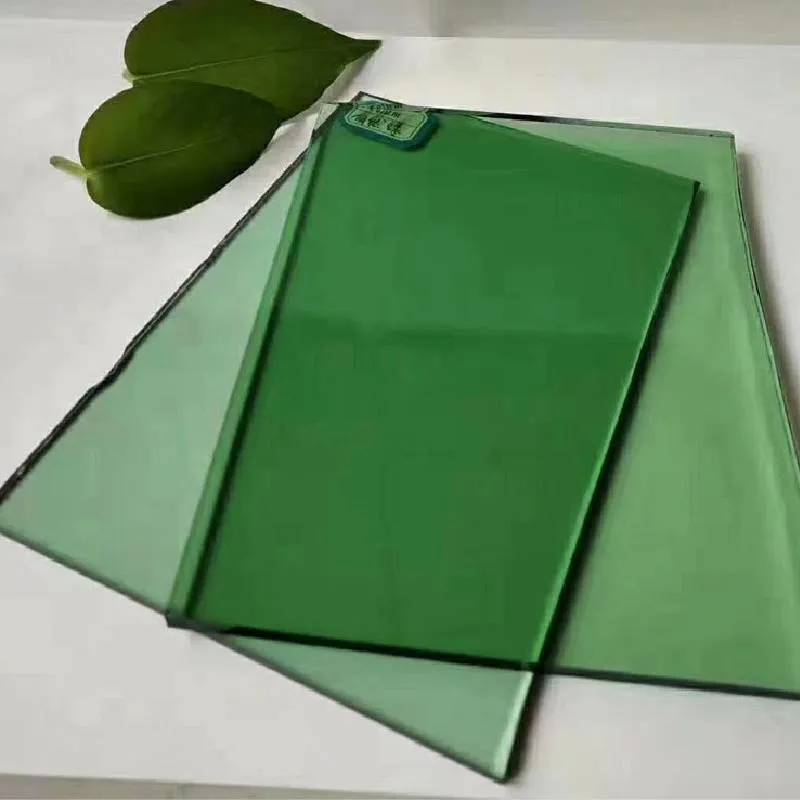Understanding Annealed and Tempered Glass Choosing the Right Option for Your Needs
In the world of construction and design, glass plays a pivotal role in aesthetics and functionality. Among the various types of glass, annealed and tempered glass are two popular options, each offering distinct characteristics and benefits. Understanding these differences is crucial for architects, builders, or anyone looking to incorporate glass into their projects.
Annealed Glass The Basics
Annealed glass is the most basic form of glass, produced by slowly cooling molten glass. This process helps to relieve internal stresses, resulting in a product that is uniformly strong. However, while it offers good clarity and is relatively inexpensive, annealed glass is not as durable or safe as tempered glass.
One of the primary characteristics of annealed glass is its tendency to break into large, sharp shards. This can pose a significant safety risk, particularly in high-traffic areas or places where the glass is subject to impacts. Because of its lower strength, annealed glass is often used in applications where safety is not a primary concern or where it can be shielded from potential damage.
Common uses of annealed glass include windows, mirrors, and picture frames
. It is also frequently utilized in interior applications where aesthetic appeal is paramount, while the risks associated with glass breakage are lower.
Tempered Glass A Step Up in Durability
annealed tempered glass
Tempered glass, on the other hand, is specifically designed to enhance safety and strength. The manufacturing process involves heating the glass to a high temperature and then rapidly cooling it. This treatment imparts a significant increase in strength—tempered glass is often four to five times stronger than its annealed counterpart.
When tempered glass breaks, it shatters into small, blunt pieces rather than sharp shards, significantly reducing the risk of injury. This property makes it an ideal choice for applications where safety is critical, such as in shower doors, glass railings, and facades.
Additionally, tempered glass can withstand higher temperatures and sudden temperature changes, making it suitable for environments that experience heat fluctuations. As a result, it is often used in commercial buildings, residential construction, and various industrial applications.
Choosing Between Annealed and Tempered Glass
When deciding between annealed and tempered glass, consider the specific requirements of your project. If aesthetics and cost are your main priorities and safety is a minimal concern, annealed glass might suffice. However, if safety, strength, and durability are essential, tempered glass is the superior choice.
Another factor to consider is local building codes. Many jurisdictions require tempered glass in specific areas, particularly in bathrooms or around pools, due to its safety features. Always consult relevant regulations and guidelines to ensure compliance.
In conclusion, understanding the differences between annealed and tempered glass is crucial for making informed decisions in construction and design. Each type has its unique benefits and limitations, warranting careful consideration based on the intended application. By choosing the right type of glass, you can enhance both the safety and aesthetic appeal of your spaces.
 Afrikaans
Afrikaans  Albanian
Albanian  Amharic
Amharic  Arabic
Arabic  Armenian
Armenian  Azerbaijani
Azerbaijani  Basque
Basque  Belarusian
Belarusian  Bengali
Bengali  Bosnian
Bosnian  Bulgarian
Bulgarian  Catalan
Catalan  Cebuano
Cebuano  Corsican
Corsican  Croatian
Croatian  Czech
Czech  Danish
Danish  Dutch
Dutch  English
English  Esperanto
Esperanto  Estonian
Estonian  Finnish
Finnish  French
French  Frisian
Frisian  Galician
Galician  Georgian
Georgian  German
German  Greek
Greek  Gujarati
Gujarati  Haitian Creole
Haitian Creole  hausa
hausa  hawaiian
hawaiian  Hebrew
Hebrew  Hindi
Hindi  Miao
Miao  Hungarian
Hungarian  Icelandic
Icelandic  igbo
igbo  Indonesian
Indonesian  irish
irish  Italian
Italian  Japanese
Japanese  Javanese
Javanese  Kannada
Kannada  kazakh
kazakh  Khmer
Khmer  Rwandese
Rwandese  Korean
Korean  Kurdish
Kurdish  Kyrgyz
Kyrgyz  Lao
Lao  Latin
Latin  Latvian
Latvian  Lithuanian
Lithuanian  Luxembourgish
Luxembourgish  Macedonian
Macedonian  Malgashi
Malgashi  Malay
Malay  Malayalam
Malayalam  Maltese
Maltese  Maori
Maori  Marathi
Marathi  Mongolian
Mongolian  Myanmar
Myanmar  Nepali
Nepali  Norwegian
Norwegian  Norwegian
Norwegian  Occitan
Occitan  Pashto
Pashto  Persian
Persian  Polish
Polish  Portuguese
Portuguese  Punjabi
Punjabi  Romanian
Romanian  Russian
Russian  Samoan
Samoan  Scottish Gaelic
Scottish Gaelic  Serbian
Serbian  Sesotho
Sesotho  Shona
Shona  Sindhi
Sindhi  Sinhala
Sinhala  Slovak
Slovak  Slovenian
Slovenian  Somali
Somali  Spanish
Spanish  Sundanese
Sundanese  Swahili
Swahili  Swedish
Swedish  Tagalog
Tagalog  Tajik
Tajik  Tamil
Tamil  Tatar
Tatar  Telugu
Telugu  Thai
Thai  Turkish
Turkish  Turkmen
Turkmen  Ukrainian
Ukrainian  Urdu
Urdu  Uighur
Uighur  Uzbek
Uzbek  Vietnamese
Vietnamese  Welsh
Welsh  Bantu
Bantu  Yiddish
Yiddish  Yoruba
Yoruba  Zulu
Zulu 

